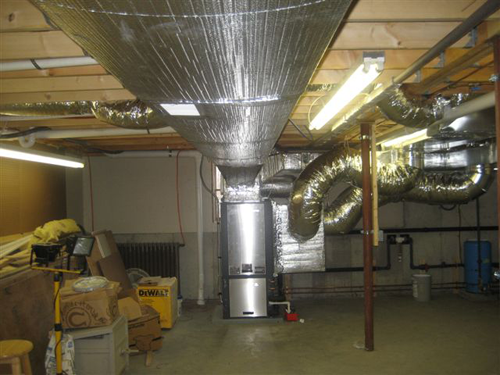Top Five Questions About Geothermal Retrofits
A lot of people who are interested in geothermal heating systems for their home already have a heating system in place. While it is obviously easiest to install a geothermal system in a brand new house, there are many options available with geothermal retrofits to adapt your current system. Here are some of the common questions about geothermal retrofits that will help you decide if that option is right for your home.

Source: www.gagnongeothermal.com
Which type of heating system is the easiest to retrofit?
The easiest type of system to retrofit is a hydro-air heating system because its operation is not that different from that of a ground source heat pump. With a hydro-air heating system, a boiler heats air which is then distributed through the house via ductwork. If you replace the boiler with the geothermal heat pump for the primary heat source, the rest of the system only needs minimal adjustment. In some cases, the hydro-air system is left in place to serve as an auxiliary heat source.
Which type of heating systems are the most difficult/expensive to retrofit?
The most difficult systems to retrofit are older houses with baseboard heating and no central air conditioning. These systems have no ducts to distribute the air from the ground source heat pump, and you will need to have ducts installed for the new system. Radiant floor geothermal systems are very expensive, so it is not a recommended retrofit for residential homes.
Will the underground loops affect my landscaping?
Installing pipes underground will obviously involve digging up at least part of your yard, but horizontal loops only need trenches of about 6 inches wide. Vertical loops require even less space and will not cause very much damage to your lawn. In the long term, geothermal systems do not cause any problems with trees, grass, or other plants. After your grass recovers from the initial installation, you should notice no differences in your yard.
How much can I save with a geothermal system?
How much you will save replacing your current system with a geothermal system varies on how much you are currently spending on heating your house and how large a system you need to heat your home. There are many great tools available to help you, such as the Ball Park Investment Calculator, which will help you calculate how much a new system will cost and how long it will take to pay for itself. If you pay off your geothermal system over time instead of with a lump sum, the monthly cost will be less than your current fuel expenditure. Remember, geothermal heat is renewable!
What should I do to get my house ready for a geothermal retrofit?
Having a geothermal heat pump that has the capacity to both heat and cool your home is very important, and one of the things that factors into that calculation is how energy efficient your house is. You will want to make sure your house has enough insulation and ENERGY STAR rated windows and doors. Seal up any air leaks you find and you might even want to have a professional energy audit performed on your house. The more energy efficient your house, the smaller of a heat pump you will need, so it is an important first step before beginning the retrofitting process.
No matter what system you currently have in place, a geothermal heating and cooling system is a great way to make your home more environmentally friendly. Be sure to talk to a professional HVAC contractor to find out if a geothermal retrofit is the right option for you.
This information is courtesy of RineAir Heating & Air Conditioning, a Cincinnati heating and air conditioning contractor. Please visit their blog to learn more about green heating and cooling.








I’m glad that you mentioned that I should have the right amount of insulation before I get the system. I’ll have to look into getting the right windows and doors as well. I’m really excited to get this new system.